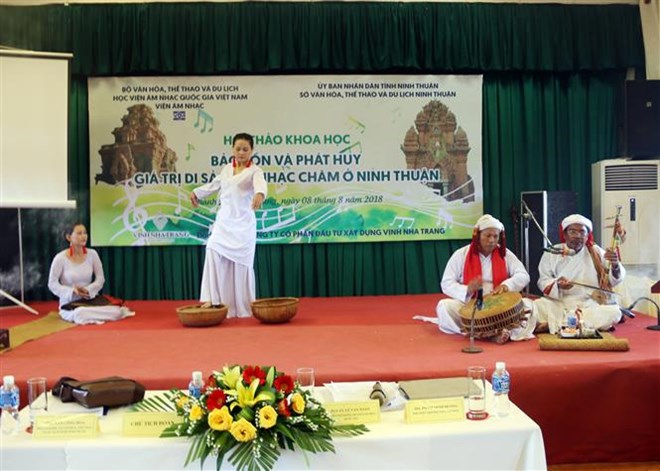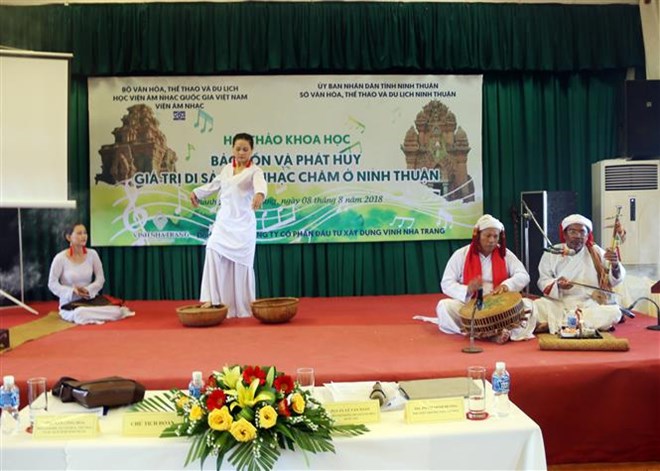
A workshop was held in the central province of Ninh Thuan on August 8, offering a venue for cultural managers, researchers, and artists to seek ways to preserve and promote musical heritage values of the Cham ethnic minority group.

Cham artists perform at the workshop (Source: VNA)
Participants
agreed that Cham musical heritage is facing the risk of fading away, as Cham
artists are getting older or pass away, while the young generation is not
passionate with taking over their successors’ roles.
Nong Quoc Thanh, deputy head of the Cultural Heritage
Department under the Ministry of Culture, Sports and Tourism, said that a lot
of workshops on Cham culture have been held, but there has been no in-depth
discussion about the unique values of the Cham musical heritage as well as
specific measures to preserve the heritage.
At this workshop, researchers stressed the need to step up
the collection, research and identification of the heritage, put Cham music in
schools’ curricula, intensify dissemination on the musical heritage, and create
favourable conditions for old artists to pass over their knowledge to young
people.
Musician Amu Nhan said that it is necessary to make Cham
music part of the popular music scene serving the society’s demand for
entertainment instead of serving only the Cham ethnic community.
The Cham community owns a rich and diverse intangible culture
with 72 ritual and festive activities, including music and dance. Many of them
remain original at present.
Source: VNA
The People’s Committee of Lac Son district held a ceremony on April 28 to receive the provincial relic certificate for the ancient rock carving site at Suoi Co stream, located in My Thanh commune.
A special music show titled "The country is in the fullness of joy” has been held at Hoa Binh Square in Hoa Binh city in celebration of the 50th anniversary of the liberation of the South and national reunification (April 30, 1975–2025).
The People's Committee of Lo Son commune, Tan Lac district, has organised the local annual traditional stream fishing festival on April 19 - 20.
As a land deeply intertwined with human history and Vietnam’s millennia-long journey of nation-building and defence, Hoa Binh is often revered for its epic tales and legends.
Residents of Hoa Binh boast a rich cultural identity, reflected in their unique language, traditional attire, customs, and folk melodies – described as "sweet as honey, clear as a mountain stream.”
Lac Son district’s Vu ban town held the 2025 Truong Kha temple festival on April 12–13 (the 15th–16th days of the third lunar month). Since its revival in 2019, the festival has been organised every three years, preserving valuable intangible heritage while meeting the community’s cultural and spiritual needs.



